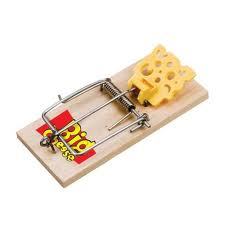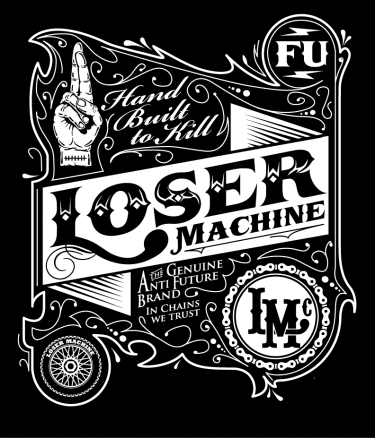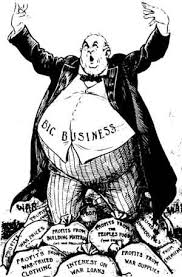Things Are Changing - But Are Things Really Changing With Them?
Tags:"And Round And Round We Go"
Â
 There seems to be a great deal of commonality and consensus in the disconnect between the Sales Department and The BDC Department just to name two and problems within both. It almost seems to be the rule and not the exception that management has not fully embraced the impact of recent changes among them being Digital Marketing is having on the marketplace today.
There seems to be a great deal of commonality and consensus in the disconnect between the Sales Department and The BDC Department just to name two and problems within both. It almost seems to be the rule and not the exception that management has not fully embraced the impact of recent changes among them being Digital Marketing is having on the marketplace today.
The BDC department is too often viewed as a bunch of internet geeks that have no conception of the sales process and should not be talking to customers. The BDC often looks at the Sales Department as a bunch of knuckle dragging egotistical Neanderthals that inhibits them from fulfilling their mandate.
This among other organizational problems plaguing Dealers today is an age old problem but one that has been exacerbated by the rapid and momentous changes that are taking the Automotive Industry by storm.
I know that for Digital Marketing this will change if not for any reason than the younger generation who grew up in this technological world and who have been entering the Automotive Marketplace have already embrace it before they even enter the job market. But what is to be done now?
How long are dealers willing to wait before they take charge and make all the changes necessary to correct the problems that are plaguing them? For instance, when it takes days or a week or longer of calls and conversations just get the manager to give approval to the BDC or the BDC to make the call just to give approval to have their data polled-you know you have a problem.
We all know that this is just one of many issues facing many dealers. So when are they going to realize that they need to have a qualified professional from the outside looking in to pinpoint the problems and provide the solutions necessary to correct them.
Once they make that realization and retain someone and after discussing and agreeing on what is broken and how it may be resolved, you need to hope that something is actually done to implement those solutions unless you are directly involved in the implementation of those changes.
You may have the plan that could put them on the path to sustained and continued growth but if the infrastructure is not in place or put in place to utilize them- all has been for naught.
How have you made an impact on your clients in resolving these types of issues and have seen them come to fruition?
Posted by Bill Cosgrove
DealerNet Services
 Understanding the “why buy†motivations in potential buyers can have a major influence on the methods your dealership may use to entice these buyers to buy from you and not from the dealership down the street.
Understanding the “why buy†motivations in potential buyers can have a major influence on the methods your dealership may use to entice these buyers to buy from you and not from the dealership down the street.
Recently I viewed a number of YouTube videos presented by Simon Senek, a motivational speaker, Columbia professor of communications and author of 'The Golden Circle' and 'Start with Why'.
Â
Senek speaks about how most companies normally approach the act of sales and marketing from an 'outside-in' perspective.
Â
Let’s use a dealership as an example:
•    What they do   = We sell cars
•    How they do   = We employ floor salespeople and list vehicles onlineÂ
•    Why they do    = We do the same as our competitors
Senek maintains that great companies - and he uses Apple as his example - operate in exactly the opposite way. In other words, they work from the 'inside-out' - for them the sequence of events will be:
•    What they do = In everything we do, we challenge the status quo
•    How they do  = We make our products user-friendly, cute to own and attractive
•    Why they do  = Want to buy one?
In Senek’s world, his belief is that companies should think in terms of having a goal of “doing business with people who believe what you believeâ€.
When you apply this to a normal customer/dealership relationship it is a process that may not find universal acclaim, as standard practice would be to sell potential buyers what you have - such as that well-priced, high-spec demonstrator. It would not be to sell to potential customers who believe what you believe!Â
Bear with me, as I know it also was a tad confusing before I got my head around the argument when I attempted to apply this thought process to a dealership setting. To assist the simplification of this process for a typical dealership setting I was able to draw on the work recently conducted by Cobalt’s corporate storyteller, Jade Makana, in her recent e-book entitled 'Defining Your Dealership Why'. Â
A comparative approach to dealership marketing outlined by Makana may be:
Dealer A who adopts a rational thought processes to marketing
Â
* We sell the car you want
Â
* Our cars are on sale
Â
* We offer zero percent financing
Dealer B who adopts a why buy feeling approach to marketing
Â
* Come in and enjoy a pressure free environment at XYZ Motors as our consultants are paid on salary not commissions. Why? Because we believe pressure belongs in your tyres not your car buying experience, or
Â
* Come buy a car from XYZ Motors and get free tyres for life. Why? Because we believe in lasting relationships, not drive-by sales. We want to know your name, not just your credit card number, or
Â
* Come buy a car from XYZ Motors, where $100 of every car sale goes to Child Cancer. Why? We support worthy charities in the hope that you will do the same.
These extreme examples listed above are used for illustration purposes. Dealer B gives up trying to concentrate on commodity features in favour of concentrating on a value proposition - what he believes and why he believes in it, these are his core value propositions.Â
He does not concentrate on price or models as they are not a why. For Dealer B it becomes second nature for him to strut his core beliefs and incorporate these into his everyday business. It is what Jade Makana refers to as "a dealer walking the why, will create customers for lifeâ€.
To understand why we buy with our feelings we need to look at our brain. The brain is made up of two major parts: the neocortex and the limbic brain. The neocortex or the “what†brain processes rational thought or facts. This is the logical part of the brain, but it does not drive behaviour.Â
The limbic brain or the “why†brain is where all our feelings and instincts are stored - it is the driver of behaviour. Hence, potential customers buy with their feelings.
When you think seriously about the why in marketing to potential customers it is far easier to differentiate yourself from your competitive dealers. Jade Makana demonstrates two US dealer examples as marketing case studies, they are:
Â
* Carter Subaru, based in Seattle capitalise on Subaru’s “why equity†and on the brand's core marketing message of safety and responsibility.
Â
Carter Subaru’s campaign is to plant one tree for every test drive, and to plant three trees for every vehicle purchased - and they proudly promote the fact that, to date, they have planted 70,000 trees!
* Sewell Automotive based in Dallas and headed by Carl Sewell has a simple and revolutionary 'why buy' message. “Do not charge customers for any service you would not charge a friend forâ€.
Â
Sewell dealerships have on-call service reps 24 hours a day, who are known for doing things like showing up at Dallas Airport at midnight to replace a broken key in a customer’s ignition, for free.
Â
The morale of this story in Makana’s opinion is: “Sell a car at rock bottom price and tomorrow they will leave you for the next great deal. Bail someone out of a jam in the middle of the night and you have a customer for lifeâ€. Sewell has expanded his business from 1968 revenue of $10 million to just over $1.5 billion today.
I leave for your perusal the following four dealership examples Cobalt offers as 'why buy' best practice:
Â
www.cartervw.com/AboutUs
www.findlaychevrolet.com/About_Us
www.peoriavw.com/AboutUs
www.sewell.com/web/our_values
Â
 If you have read my blogs “Don’t Fall Into The Trap†or “Take Back Your Marketing†or the many comments I have made concerning this issue, you know that I have been against the large companies commoditizing approach they have been feeding dealer’s- And in particular I am referring to the small and medium size dealers- that you need change your business models and to sell more at a lower price to compete in today’s marketplace.
If you have read my blogs “Don’t Fall Into The Trap†or “Take Back Your Marketing†or the many comments I have made concerning this issue, you know that I have been against the large companies commoditizing approach they have been feeding dealer’s- And in particular I am referring to the small and medium size dealers- that you need change your business models and to sell more at a lower price to compete in today’s marketplace.
Â
I am now starting to see a trend that is showing support for what I have been saying for a long time. I just read a white paper put out by firstLook which states that used car dealers and private party sales in April climbed 0.7 percent vs. year ago to 3,819,127 units. vs. 3,792,604,
Â
Total Value of Used Cars sold, however, slipped 5.8 percent to $34.1 billion compared to last year's $36.2 billion because of lower transaction prices.
Â
Transaction prices across all three channels were down 6.46 percent to $8,928 from $9,545. (Excludes aftermarket products, taxes, fees, etc.)
Â
“• BuyÂers were kickÂing tires at five or six difÂferÂent dealÂerÂships years ago, and that’s now dropped to 1.8 in-person store visÂits.
Â
• As the recesÂsion slammed down hard, used car supply waned and commoditizing of the used car industry was born. Many dealers have sold inventory as cheap as possible, turning them as fast as possible for tiny marÂgins, then ran back to the aucÂtions to scoop more supÂply.
Â
• The “velocity only†approach hasn’t gone so well. Gross profÂits have been eroded.
Â
It doesn’t have to be that way if you can access both the tools and philosophy necessary to turn cars while achievÂing high gross profits.â€
Â
“And anyone can stand in front of a room and tell you to price everything for dirt cheap and it will sell faster. The key is how you can achieve 85% Retail Sales Efficiency while maintaining high gross profits.
Â
Some seemingly “progressive†thinkers have very simply stated that used cars are a commodity. The only way to be successful in today’s market is to sell cars really cheap at 96% of the market, turn them as fast as possible for tiny margins, and run back to the auction to scoop up more. And quite frankly…a lot of people drank that Kool-Aid. The hypothesis being that this approach will, allegedly, increase turn and volume, and with that volume you can make more money. A velocity only approach they call it.
Â
Beyond being a gross oversimplification of the car business, the impact this has on the market is obvious – eroding gross profits. In fact, based on a recent dealer survey, this is the #1 concern for General Managers and Dealer Principals in 2013. “
Â
The bottom line is…not all used cars are commodities, and we need to stop treating them that way. Just like in any retail business there are high margin products and low margin products. The key in the used car business is having the tools and philosophical approach necessary to identify the difference between the two."
Â
Interestingly, a recent CarMax Consumer Study found that only 23% of people rank price as the most important factor in their buying decision. 77% rank VALUE (typically tied to some aspect of quality) as their top criteria.
Â
I remember on one occasion at a dealership I was working at the used car Manager was telling the rep from Auto Trader that he wasn’t happy with the results he was getting. The Rep responded by telling the manager that he needed to lower his prices if he wanted better results.
Â
That preowned manager did not listen to the rep and bucked the trend of lowering prices to compete online. - And guess what- average grosses in his department were much higher than the industry average and his total unit sales were improving. Number one that is why you have a “good†sales staff and “good†finance people for and number two you can always come down in price but I never heard a customer say a price was too low.
Â
You can only add value by competing within your market area all of which can be done with offers in  CPO, service i.e. loaner cars, shuttles; specials; events and by extracting the vast resources you already have to create campaigns and make in house adjustments that will capitalize on those campaigns.
Â
By having the right people that can produce “creative campaigns†and the right staff you can turn the tide and sell the VALUE not the PRICE.Â
Author Bill Cosgrove
DealerNet Services
 Grow your business within your market area- from within your organization
Grow your business within your market area- from within your organization
Â
The problem I see in the Automotive Industry is that the large corporations, who are trying to take control of the Vertical landscape from B2B wholesaling to the classified car sites to inventory control and marketing, find it easier to market in a one style fits all approach. This may work well for them but it is a trap you don’t want to fall into.
Â
The tighter The Commoditization Trap is on a company or an industry, the more that company must look outside – to its customers and prospects to find, and, more importantly, understand the unique concerns that affect them. Companies must engage their customers to know what adds value for them. If you want to avoid or escape The Commoditization Trap you must find ways to add value (something people are willing to pay for) before the product becomes an issue.
One of the rules of value creation is: if your actions don’t create value, then your actions decrease value. If your sales presentation does not increase the perceived value of your products or services, it decreases the value your customers or prospects perceive they get from you.
Â
You can only add value by competing within your market area which can easily be done by drilling down and extracting the vast resources you already have to create campaigns and make in house adjustments that will capitalize on those campaigns.Â
Author Bill Cosgrove
DealerNet Services
 Most sub Prime buyers have been in this position for some time realized their car buying experience is different from that of their more credit-worthy peers. Some due to circumstances beyond their control are experiencing the sub Prime process for the first time. These buyers still warrant respect. Despite credit woes, their dignity remains intact and they want to be treated fairly and professionally.
Most sub Prime buyers have been in this position for some time realized their car buying experience is different from that of their more credit-worthy peers. Some due to circumstances beyond their control are experiencing the sub Prime process for the first time. These buyers still warrant respect. Despite credit woes, their dignity remains intact and they want to be treated fairly and professionally.
To give you an idea of just how Sub Prime can impact your business, this Past February versus the same month a year earlier saw purchasers with FICO scores below 550 shoot up 48.3 percent year-over-year.
In fact, analysts found that the trend toward lower FICO scores among used-car buyers resulted in an average of 561.3 in the opening days of April. The added  share of sub-670 credit score buyers increased to 46.9 percent from March's reading of 46.37 percent and the year-ago mark of 35.22 percent.
Subprime is the most profitable segment in the pre-owned vehicle segment for which you must be equipped to compete.
Â
Go to Dealer Monthly for the Stats
Author Bill Cosgrove
DealerNet ServicesÂ
 First I want to thank Jim Ziegler and Manny Luna and others for their due dilegence in the Autogate affair that is currently unravelling and have made it possible for me to get some attention on a topic close to my heart.
First I want to thank Jim Ziegler and Manny Luna and others for their due dilegence in the Autogate affair that is currently unravelling and have made it possible for me to get some attention on a topic close to my heart.
I want to take advantage and seize the moment concerning all the controversy surrounding Cars, com among others with hints of more to come.
Why? Because I hope that finally YOU the dealer who is following this mantra will come out of the ether and realize that the medicine that the giant classified Ad and Services Companies have been prescribing Dealers is showing its nasty side effects and is WRONG.
Let’s take a look at some numbers to see just how much these churn and burn marketing strategies can affect Dealers. One side effect of this strategy is that you are always chasing inventory to sell more to make less money – who does that benefit? Â
Another side effect is management and salespeople are working harder to make the same or less money and if you have worked at a dealership in the past few years these guys have more responsibilities than ever before. This leaves the possibility of losing conversions and inventory purchasing errors. Plus, you are probably spending more money to drive that traffic to churn those cars and -Â who do you think benefits from that.
Another side effect is that you start taxing you facilities ability to do the MPI (Multipoint Inspections) reconditioning e.t. and unless you spend more to fill the gap you chance having other problems with Inventory presentation. WHO DO YOU THINK THIS AFFECTS?
Sure there are dealers that sell for one take or leave it price and do well but how long do you think it would be when this becomes the rule and not the exception. There will be more consolidation and small and medium size dealers will be put out of business by the churn and burn stores that need to gobble up more and more market area to survive. And who do you think this will benefit? –
I am not a conspiracy theorist by you can’t help but see the correlation here especially with what has been surfacing over the past couple of weeks.
According to FirstLook, total sales in April climbed 0.7 percent vs. year ago to 3,819,127 units. vs. 3,792,604, transaction prices across all three channels were down 6.46 percent to $8,928 from $9,545 in 2012 excluding aftermarket product.
So let’s do the math.
$9,545.00- $8,928.00 = $617.00. Let’s say on the average you sell 50 pre-owned units per month. Let’s say you could have sold just 25 of those 50 units and grossed $309.00 more per unit.
$309.00
X 25 units
$7,725.00
Let’s say that you could have made another $800.00 dollars per unit on the back end.
$800.00
X 25
$20,000.00 Let’s add it up
Â
You just made at $27,725.00 more in gross that in a year adds up to $332,700.00 plus what you have just saved on all the added costs of churning and burning units and the costs of potential Presentation of inventory and inventory purchasing errors, losing conversions in the rush to churn e.t. in the rush to churn.
Â
Let’s say that you sell an additional 10 cars a month with the churn and burn method. Using $1200.00 as an average gross and gross $800.00 on the back end you would have grossed $20,000.00 Dollars or $240,000.00.
Â
$332,700.00
$240,000.00
($92,000.00)
Â
You grossed ($92,000.00) less plus all the additional overhead it took to Market, Buy, Prep and sell them. -Who is does this benefit?
If you need to go outside your market area to gain market share and have the population density within you geographic market area for growth YOU need to look inside not outside and fix the problems  within- Who will benefit from this?
If you set your goal of growing within your market area the benefits are greater and put those additional resources you are using to draw in people from outside your market area you will be better for it. People who purchase from outside your market are price buyers only because you have no value to offer them.
So think about it and do what you think is the right path for you to take. For most of you-you will realize the only ones that are getting feed are the Dragons.
One of the rules of value creation is: if your actions don’t create value, then your actions decrease value. If your sales or marketing presentation does not increase the perceived value of your products or services, it decreases the value your customers or prospects perceive they get from you.
Author Bill Cogrove
DealerNet Services
AFTER THE BAD MEDICINE- WILL YOU BE READY FOR THE TOUGH MEDICINE?
Tags:
 If you the Dealer think you could or should be doing better, you need an experienced independent Consultant.
If you the Dealer think you could or should be doing better, you need an experienced independent Consultant.
Â
If you the Marketing Company are putting your reputation on the line and driving traffic to a Dealer who is not prepared to sell them you need  an Independent Consultant in there first.
Â
Remember you as the Dealer or Marketer are in the Driver’s Seat So Take the Wheel -When you’re going straight ahead-you get there faster-and safer so take control and win the race. If you are not committed and prepared 1000% It is time to GET OFF THE TRACK.
The blame always lies with you. Before you blame your vendor or (presumably)Â competent staff- look in the mirror- maybe they are not the incompetent ones.
Â
Customer Acquisition Cost (CAC) is determined by customer visits. Your bottom line lives or dies by IT- BOTTOM LINE. Â And it is crutical to design your marketing campaigns and structure your staff to do what works best for YOU at YOUR location in YOUR geographic area.
Â
If you're not Marketing to the Latino/Hispanic market-YOUR LOSING A LOT OF MONEY. The Latino/Hispanic population of the US is the 20th largest economy in the world so is not to be ignored. Please go to the more section above and follow the link "ENGAGING THE US LATINO MARKET" at Autospeak (Engaging the US Latino Market) to get a better understanding of impact this market segment represents.
Â
Â
 If someone isn't willing to tell you this to your face- Get another Consultant.
  If you didn't already know all of this -YOU BETTER GET A CONSULTANT
Â
    Bad Medicine-Who's Really Getting Better?                       Posted By Bill Cosgrove   DealerNetServices
 First of all, let me preface this by saying that it seems to me that the vAutos, Autotraders and True cars of the world are trying to commoditize the automotive industry. This may work well for the corporate owned multi-franchise companies but for the rest……
First of all, let me preface this by saying that it seems to me that the vAutos, Autotraders and True cars of the world are trying to commoditize the automotive industry. This may work well for the corporate owned multi-franchise companies but for the rest……Advances in technology are giving dealers the tools to directly market through their own websites, Social media, etc. and within their geographic area to increase floor traffic at their location. Once there they must have the confidence in their sales force to get the job done.
A good sales management team knows their market and has the tools in house to know what is selling for them and how to effectively control their inventory. My question is why are dealers paying big money to let companies come in and tell them how much to sell and/or buy their vehicles for and what vehicles to buy to increase sales. What are you paying management for? One day I overheard a rep from Autotrader tell the preowned manager that he needed to lower his prices to get better results.
That preowned manager bucked the trend of lowering prices to compete online. - And guess what- average grosses in his department were much higher than the average and his total unit sales were improving. Number one that is why you have a “good†sales staff and “good†finance people for and number two you can always come down in price but I never heard a customer say a price was too low.
Dealers should work with a marketing company who is going to help them drive traffic and not try to run their company. The bulk of dealerships sales are still made within their geographic area and that is where they should be focusing.
Author Bill Cosgrove
http://dealernetonlineservices.biz
Â
 I cut my teeth selling at an early age selling door to door. From delivering newspapers to Fuller Brush to Cash is Best, for which Ted Turner was a fugitive from the US holding offshore on his yacht in international waters for purporting a pyramid scheme, to selling the original wind up fire and burglar alarms for the home.
I cut my teeth selling at an early age selling door to door. From delivering newspapers to Fuller Brush to Cash is Best, for which Ted Turner was a fugitive from the US holding offshore on his yacht in international waters for purporting a pyramid scheme, to selling the original wind up fire and burglar alarms for the home.
After having had my foot caught in the door many times I eventually found my way into Automobile sales. I was so excited to have this opportunity because here were people coming to me looking to buy what I had to sell.
I felt like a kid is a candy store and never looked back. This business allowed me to experience owning my own businesses but I always came back to what I always loved.
When I think of all the advice available to train a good salesperson I think of why salespeople would not all be superstars. After years of being around commissioned sales and salespeople both in and out of the Automotive industry it is apparent to me that the art of selling (and it is an art) is a talent that few people ever master.
I have seen so many techniques that salespeople use to make a sale that works very well for them but would never work for me. As a matter of fact, Some I could not even fathom how they even made so many sales with their “Style†of selling but it worked for them.
What worked for them would never work for me or you.. You can only observe and take those observations and find a “Style†that works for you and make it your own.
This “Style†for the fortunate ones something that comes naturally making selling for them almost effortless. Sales must be looked at as a challenge- the more difficult the sales is to make, the more satisfaction you get from the experience.
That challenge is something that the truly gifted crave, need and look forward to each and every day in every aspect of their lives. It is like a game of chess that is played and each move determines an eventual outcome that a true salesperson is driven to win by reading each move of the opponent before it is even made.
We are all actors on a stage in our journey through this wonderful life but only a few can mold and manipulate the parts they play.
There is and always has been a misunderstanding or maybe even a lack of respect for these truly gifted people. Only a secure, talented and gifted manager who driven to hit that next level knows that he must let these salespeople work their craft using their own “style†to make the relationship rewarding and successful.
These are the type of people that one needs to make a business truly successful. The ones who are in it not just for the money but because they are driven to succeed. Don’t settle for mediocrity. Constantly be looking for the people that will take, maintain and always be looking for that next rush that only these people get from their work.
If you have all the tools and have not found your “Style†as an owner, manager or salesperson unfortunately you probably never will. But if you know all this and never stop looking to surround yourself with these truly talented people you will have your battle plan and will eventually win the war.
Author Bill Cosgrove
http://dealernetservicesonline.biz
Â
Trade Secret Litigation Over Social Media: Is It Worth The Cost?
Tags:
With the continually increasing popularity of social media websites like Facebook, Twitter, and LinkedIn, where members can be connected to friends, family members, co-workers, clients, and potential clients all by logging in to one account, it is understandable that companies and employers are concerned about the security of their trade secrets. However, the distinction between what is part of an employee’s personal profile and what portion may belong to the employer is not an easy one to establish. In the past few years, a number of lawsuits have been filed, by both employers and employees, alleging misappropriation of social media accounts under trade secret law. However, a court or jury has yet to find at trial that a LinkedIn profile or a Twitter account contains protectable trade secrets capable of being quantified into recoverable damages. This article summarizes a few of the recent cases involving social media and discusses some of the issues to consider when litigatin g these kinds of trade secret actions.
g these kinds of trade secret actions.
Recent Cases Alleging Misappropriation of Social Media
Christou, et al. v. Beatport, LLC, et al. was filed in December 2010 by Regas Christou, the owner of several nightclubs with national reputations as venues for electronic dance music. A former employee of Mr. Christou, Bradley Roulier, booked well-known DJs to perform at the clubs. He also created, with financial and promotional support from Mr. Christou, Beatport, a popular online marketplace for electronic dance music. After Mr. Roulier stopped working for Mr. Christou, he founded his own competing club. Mr. Christou alleged that Mr. Roulier threatened DJs that their tracks would not be promoted on Beatport if they performed at Mr. Christou’s clubs. In his cause of action for trade secret misappropriation, Mr. Christou alleged that Mr. Roulier and other defendants misappropriated the log-in information for his clubs’ profiles on MySpace, lists of friends and customers, and lists of cell phone numbers and email addresses for DJs, agents, and promoters.
On March 14, 2012, the court denied the defendants’ motion to dismiss the trade secrets causes of action.[1] The court first noted that whether the plaintiffs’ MySpace friends list was a trade secret was a question of fact.  After considering all the factors for determining trade secret status, the court then held that the plaintiffs had alleged sufficient facts to maintain their trade secret claim at the motion to dismiss stage.
On March 26, 2013, the plaintiffs dismissed their claims against Beatport due to an informal resolution and voluntarily dismissed the claims of all but the two clubs that featured electronic dance music.[2]Â The case remained set for a jury trial beginning June 24, 2013.
Another lawsuit, PhoneDog v. Kravitz, filed in July 2011, involved the claims of PhoneDog, an interactive web resource that reviewed mobile products and services, against its former employee, Noah Kravitz. While Mr. Kravitz worked as a product reviewer and video blogger for PhoneDog, he was given use of and maintained the Twitter account “@PhoneDog_Noah,†which generated approximately 17,000 Twitter followers during the course of Mr. Kravitz’ employment. When his employment ended, PhoneDog requested that Mr. Kravitz surrender the Twitter account and Mr. Kravitz, in response, changed the account handle to “@noahkravitz†and continued to use the account. In its complaint, PhoneDog alleged misappropriation of trade secrets, intentional and negligent interference with prospective economic advantage, and conversion.
On November 8, 2011, the court denied Mr. Kravitz’ motion to dismiss, finding that PhoneDog had sufficiently alleged a claim for misappropriation of trade secrets.[3] Like the court in Christou v. Beatport, the court inPhone Dog v. Kravitz noted that to the extent that Mr. Kravitz challenged whether the password and account followers are trade secrets and whether Mr. Kravitz’s conduct constitutes misappropriation raised evidentiary issues more properly raised on a motion for summary judgment.  Id. However, no motion for summary judgment was ever decided as the case settled on December 3, 2012 and Mr. Kravitz was allowed to keep both the Twitter account and its 17,000 followers.[4]Â
One of the few trade secret lawsuits involving social media information that proceeded all the way through a bench trial is Eagle v. Morgan, a case brought by Linda Eagle, the co-founder of Edcomm, Inc., a banking education company that provided on-line and in-person services. In May 2009, Dr. Eagle created a LinkedIn account with her Edcomm e-mail and used it for sales and marketing purposes. However,  after her termination following the buyout of Edcomm by another company, Dr. Eagle’s LinkedIn password was changed and she was locked out of the account. After Dr. Eagle filed suit in July 2011, alleging, inter alia, unauthorized use of her name, misappropriation of name and publicity, identity theft, and conversion, Edcomm filed counterclaims for misappropriation, unfair competition, and conversion.
After a bench trial, the court entered judgment on March 12, 2013 for Dr. Eagle only on her claims for unauthorized use of name and invasion of privacy, finding that Edcomm used Dr. Eagle’s name without her consent for commercial purposes when it changed the content on Dr. Eagle’s LinkedIn page to provide information about Sandi Morgan, the interim CEO of Edcomm, even though the url still contained Dr. Eagle’s name.[5] However, the court found that the evidence was insufficient to support Dr. Eagle’s request for damages and therefore did not award any compensatory damages to Dr. Eagle.
The court then entered judgment against Edcomm on its counterclaims for misappropriation, unfair competition, and conversion, finding that Edcomm never had a policy requiring that its employees use LinkedIn, did not dictate the precise contents of an employee’s LinkedIn account, and did not pay for its employees’ LinkedIn accounts. Edcomm also failed to put forth any evidence that Dr. Eagle’s contacts list was developed and built through the investment of Edcomm time and money rather than Dr. Eagle’s time and money.
The court’s description of the outcome in Eagle v. Morgan as a “somewhat mixed bag for both sides†highlights the importance of doing a cost-benefit analysis before making the decision to litigate over who owns a social media account. While the primary lesson to be learned from these cases is that employers should have specific policies in place regarding personal and company social media, a secondary issue to consider is whether it is cost effective to litigate a trade secret case through trial, even if company policies purportedly establish ownership of social media accounts. Because the issue of whether Twitter followers or LinkedIn connections is a trade secret is a question of fact, courts will not usually sustain a demurrer or grant a motion to dismiss on the ground that social media connections do not constitute trade secrets. Thus, an employer or employee who files a complaint alleging trade secrets misappropriation should be prepared for the possibility of litigating the case at least through the summary judgment stage, if not through a jury or bench trial. Further, because of the uncertainty of damages from a misappropriation, there is no guarantee that courts would even award damages because it would require the fact-finder to put a value on each friend, contact or follower.
Establishing a Company Policy Regarding Social Media that Best Effectuates Trade Secret Protection
In response to employers seeking guidance on social media issues, the National Labor Relations Board has issued multiple reports regarding the results of investigations in dozens of social media cases. The third report, which can be found at http://www.nlrb.gov/node/5078, contains a sample media policy with general guidelines relating to posting content online as well as specific guidelines instructing employees, for example, not to register social media accounts using their work e-mail addresses. While the sample media policy does not address all the factors discussed in Eagle v. Morgan (e.g. who pays for the account, who is responsible for the content), it provides a good starting point for employers seeking to establish ownership of social media accounts. It is also a good idea to become more familiar with the options available to companies on social media websites, such as business pages and accounts on Facebook and LinkedIn. When companies create separate social media accounts and allow their employees to post content and develop business on those accounts, they will not have to be concerned about the commingling of corporate trade secrets with personal social media posts and the possibility of misappropriation of those trade secrets after employees leave.
About the Authors
Ellen P. Liu is an associate at Sideman & Bancroft LLP. Her primary practice areas include civil litigation and enforcement of intellectual property rights. Constance J. Yu is a partner of Sideman & Bancroft LLP in San Francisco. Her primary practice areas include civil litigation and business crimes defense. Sideman & Bancroft LLP is a certified Women Owned Business Enterprise. The firm is the largest women-owned provider of legal services in the Western United States, certified through National Association of Minority and Women Owned Law Firm (NAMWOLF) and Women’s Business Enterprise National Council (WBENC).
DealerNet Services
CALENDAR
CATEGORIES
TAGS
TWITTER POSTS
CALENDAR
- powered by
- One Big Broadcast
- creative by
- WebStager
© 2025 One Big Broadcast | All rights reserved
